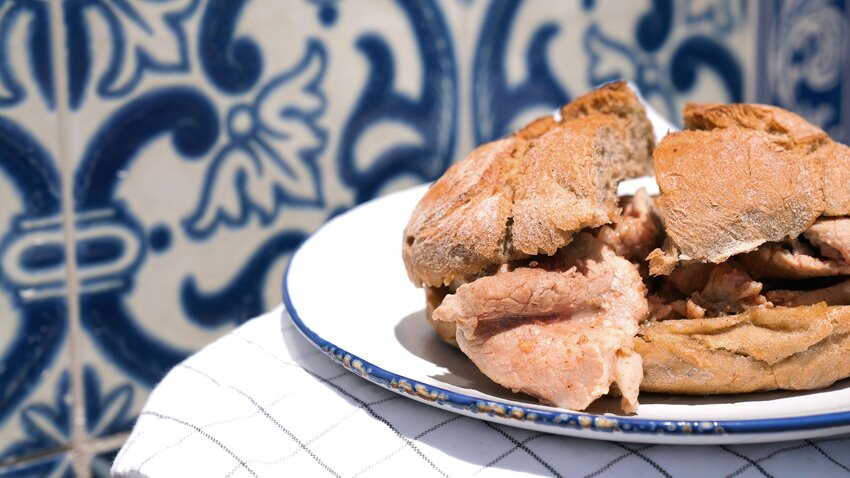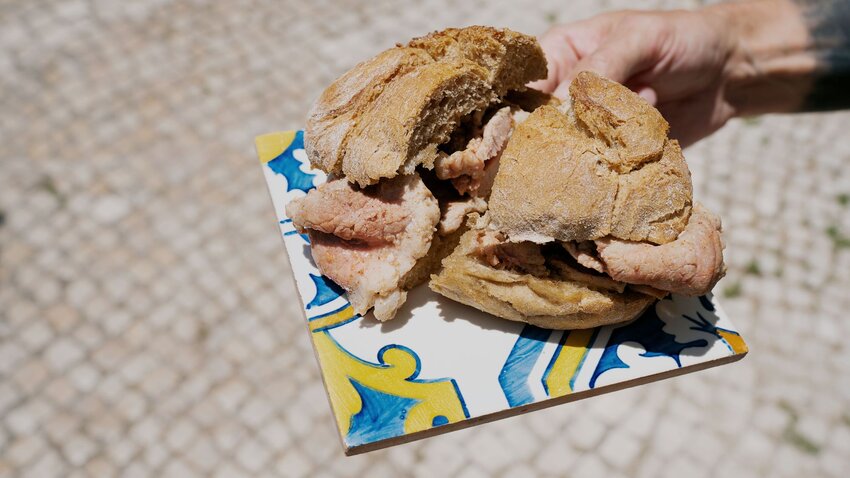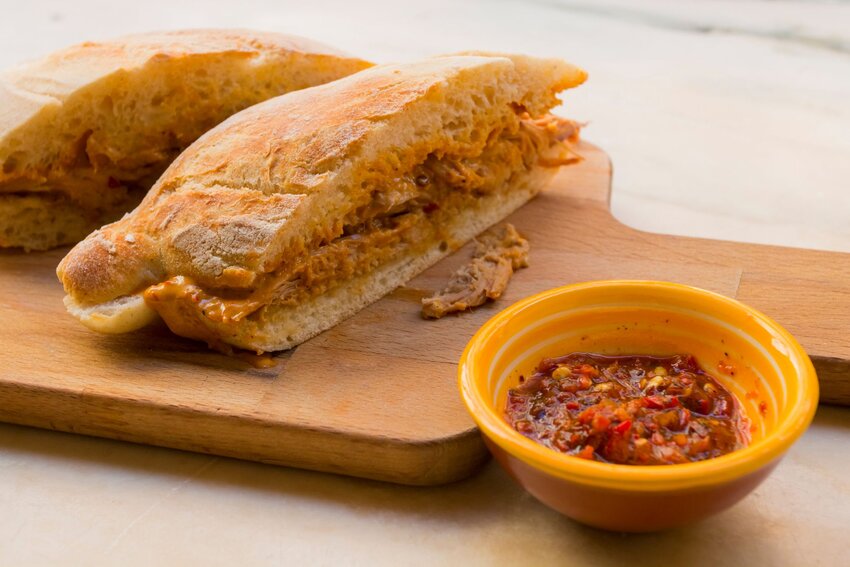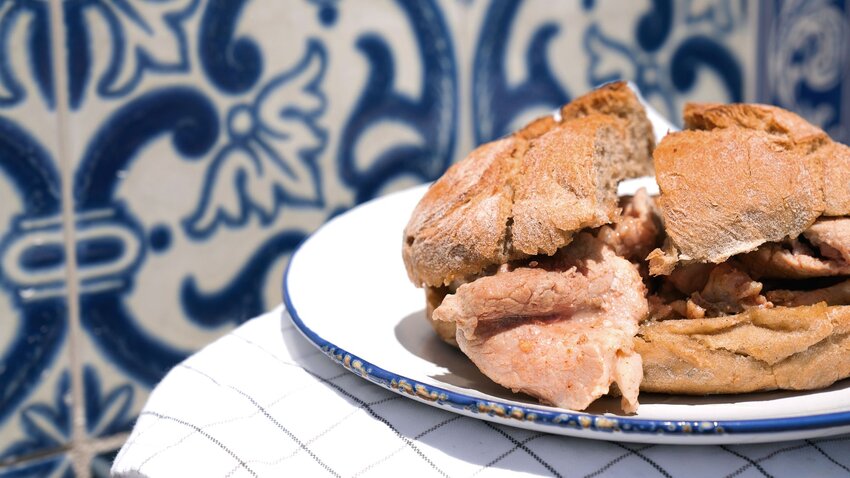There are several ways to experience local cuisine when traveling, but two of my favorites are the spontaneous or the fastidiously researched methods. No expectations means more surprises as you discover something that opens new flavor pathways in your brain. The drawback, of course, is that you may not come across certain culture-specific specialties at all. Thus enters the eternal debate as I get ready for any trip: to gather as much information as possible to cover every activity, food, and sight, or prepare to value the experiences I do have — even if I know I’m missing others.
When it comes to Portuguese food, the know-nothing route is a sure bet for some delightful discoveries. Lisbon’s Alfama neighborhood, for example, is a treasure map of handmade and locally produced treats like the ginja shops that appear in the evenings, serving candy-sweet cherry liquor in edible chocolate cups. Plus, you can wander just about anywhere in Portugal and find the dishes that every blog and its parent recommend: pastel de nata, fresh fish (don’t skimp on the sardines), or porco preto (Iberian black pork).
Surprise-based discovery in Portugal led me to tasting barnacles and sampling travesseiro, a pillow-like pastry originating in Sintra, along with markets brimming with tinned seafood (preconceived notions be damned, those tins are packed with freshness not always associated with canned foods in the U.S.). But this food strategy wasn’t without peril. In fact, had I not encountered a charming Porto local, I’d never have found my now all-time favorite foreign dish: the bifana.

Imagine for a moment: thinly sliced pork simmering in a wide, bubbling pot. A long fork swirls the succulent strips in a heavily spiced red sauce that shimmers like a magic potion. Beside the pot rests a pile of rolls. With meat this perfectly prepared, any bread could be used, but this is Portugal and nothing here is done as an afterthought. These rolls are crisp and flakey, the crumb light but substantial. They’ll need that substance—they have an important job.
The same worker who’s been stirring the pot slices a bun open, and then in a practiced motion lifts the meat in one hand, the roll in the other. The bread’s mouth opens, and in goes one, two, three scoops of pork. Then, in a move so dexterous and quick it has to be seen to be believed, the roll—meat and all—are half-submerged back into the liquid one last time before they make it, finally, to a plate and off to a table.
This is the scene that plays out in Porto’s Conga, a three-story generational restaurant that constantly has a line stretching out the door (don't worry, you won’t have to stand long). While waiting, you can watch the bifana preparation and soak in the smells filling the entire open-kitchen that are so appealing they might as well be swirling outward in cartoon-style spirals.
This bifana is messy, but also disappears before you have the chance to appreciate exactly what makes the rich meat, soaked bread, and accompanying Super Bock so compelling. This is the Portuguese late-night go-to, their “fast food,” and with quick options this excellent, it’s understandable how these sandwiches became so popular. The best bit: no two places make them the same.
Porto and other northern towns are known to slice their pork in thin shavings and stew it, while southern towns opt for more of a grilled patty or sautéed strip. The bifana seasoning depends not only on the region, but the shop itself, and these recipes are closely guarded. Though in some restaurants, you can purchase a bottle of sauce to smuggle back to your jealous friends.

Take peri-peri sauce, the seasoning with which the aforementioned Conga bewitches its customers. This pepper descended from plants in the Americas, but is more commonly known to grow wild in Southern African regions. Like any fabulous flavor, its components are an interplay of cultures that span centuries; ancestors shifting the recipe, improving it, adding new components, and evolving it into the multi-generational, multicultural condiment we have today. Not only are you enjoying Portuguese history when you take a bite of a Conga bifana, you’re taking a delicious step into years of international connection too.
As for the first ever bifana in Portugal, the town of Vendas Novas in Alentejo claims the title. The rest of the South follows suit in style, serving up bifanas in patty form accompanied with vibrant yellow mustard. Even Portugal’s McDonalds have coined their version the McBifana. Some restaurants take an inventive route, adding eggs or cheese and even offering vegetarian and vegan versions.
It’s hard to say where a traveler should go to enjoy a bifana sandwich and impossible to know what regional style they’ll like the most, but if you’re game and Portugal-bound, you’ll have options. Bifanas show up at street vendor stalls and restaurants across cities and in food trucks at festivals, major events, and street fairs.
For about two to three euro each, you could easily sample your way across Portugal by way of the bifana. I could recommend Casa das Bifanas in Lisbon, and Casa Guedes or Poveiros in addition to Conga in Porto, but while these are landmark locations, you’re just as likely to discover bites of joy in smaller, family-run spots without websites or social media.

Whether you like to know everything about a country before you arrive or prefer to stumble upon popular foods and sights for that sense of unprepared delight, there’s no wrong answer when it comes to Portuguese staples and the marvelous bifana. Just make sure to be generous with the peri-peri sauce.





